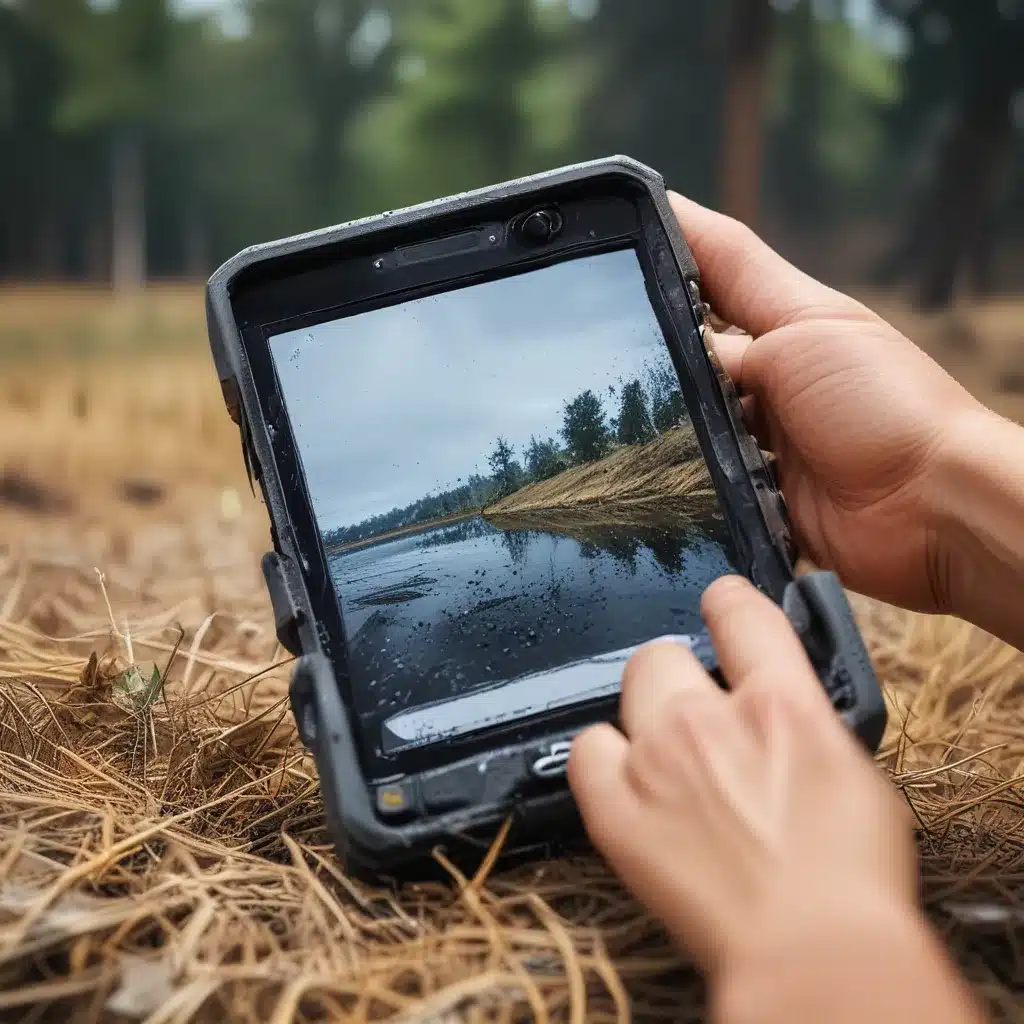Surviving the Smartphone Gauntlet: A Reliability Engineer’s Tale
As a reliability engineer, I’ve seen some wild things in my day. Smartphones that have survived being dropped from five-story buildings, submerged in water, and even run over by trucks (don’t ask). But the reality is, not all phones are created equal when it comes to durability. And when you’re working in the field, relying on your mobile tech to get the job done, that durability can make all the difference.
The Rise of the Rugged Smartphone
These days, smartphone manufacturers are getting savvier about designing devices that can withstand the rigors of everyday use, let alone the occasional construction site mishap. New technical standards are helping to ensure these devices are built to last, with features like reinforced casings, water-resistant seals, and shock-absorbing materials.
But it’s not just about the hardware. Reliability engineers like myself play a crucial role in evaluating and testing these smartphones to ensure they can handle the demands of field work. We put them through the ringer – dropping them, submerging them, and even subjecting them to extreme temperatures. And the ones that come out on top? Well, those are the phones we know we can trust to keep our teams connected and productive, no matter what the job throws at them.
Putting Phones to the Test
One of the key things we look at is a smartphone’s ingress protection (IP) rating. This measures how well the device is sealed against the intrusion of dust and water. The higher the rating, the more rugged the phone. And let me tell you, when you’re working in a construction site or out in the elements, that water-resistance can be a real lifesaver.
But it’s not just about the IP rating. We also test for things like impact resistance, temperature tolerance, and even chemical exposure. Because let’s be real, field work can be a messy business. And the last thing you want is for your phone to conk out on you because it couldn’t handle a little spilled oil or a sudden temperature drop.
The Human Factor
Of course, even the most durable smartphone in the world won’t do you much good if the people using it don’t know how to properly care for it. That’s why we also focus a lot on training and education, making sure our teams understand how to handle their devices with care.
I remember one time, we had a guy who kept dropping his phone on the job site. He’d pick it up, dust it off, and keep going like nothing happened. But after a while, the screen started cracking, the buttons stopped working, and the whole thing was just a mess. Turns out, he didn’t know the first thing about how to properly protect his phone from impacts.
Smartphone Reliability: A Team Effort
Ensuring reliable smartphone performance in the field is a team effort, and it takes a village to get it right. From the engineers designing the hardware, to the reliability experts testing its limits, to the end-users who know how to properly care for their devices – everyone has a role to play.
And at the end of the day, when we see our teams out there, relying on their phones to get the job done, it makes all the hard work worth it. Because we know that those devices are built to withstand whatever comes their way, and our people can focus on what really matters – getting the job done right.
The Future of Reliable Field Tech
As technology continues to advance, I’m excited to see what the future holds for rugged, reliable smartphones. IT service providers like ITFix are already leading the charge, partnering with manufacturers to develop devices that can truly handle the rigors of field work.
And it’s not just about the phones themselves. We’re also seeing a push for more standardized, user-friendly charging and connectivity solutions, making it easier than ever to keep our teams powered up and connected, no matter where the job takes them.
So if you’re in the market for a smartphone that can stand up to the demands of field work, do your research, and look for the ones that have been put through the ringer by reliability experts like myself. Because when it comes to keeping your team productive and your operations running smoothly, a little durability can go a long way.
The Reliability Engineer’s Checklist: What to Look for in a Rugged Smartphone
When it comes to choosing a smartphone for field work, there are a few key things to keep in mind:
| Feature | Importance |
|---|---|
| IP Rating | High – Look for IP67 or IP68 for maximum water and dust resistance. |
| Impact Resistance | High – Smartphones should be able to withstand drops and shocks without damage. |
| Temperature Tolerance | High – Devices need to perform well in extreme hot and cold conditions. |
| Chemical Resistance | Moderate – Ability to withstand exposure to common industrial chemicals is a plus. |
| User-Friendly Design | High – Intuitive controls and a durable, ergonomic form factor are a must. |
| Repairability | Moderate – Easy access to replacement parts and repair options can extend a device’s lifespan. |
Remember, a reliable smartphone is about more than just the hardware. Proper training and education for your field teams is also crucial to ensuring these devices stand up to the demands of the job. By partnering with experts and investing in the right tools, you can keep your operations running smoothly, no matter what the field throws your way.













